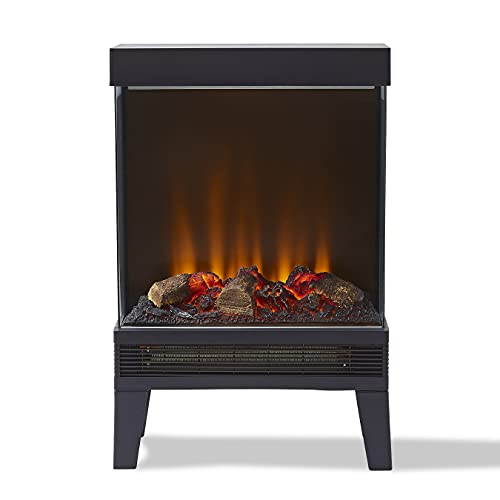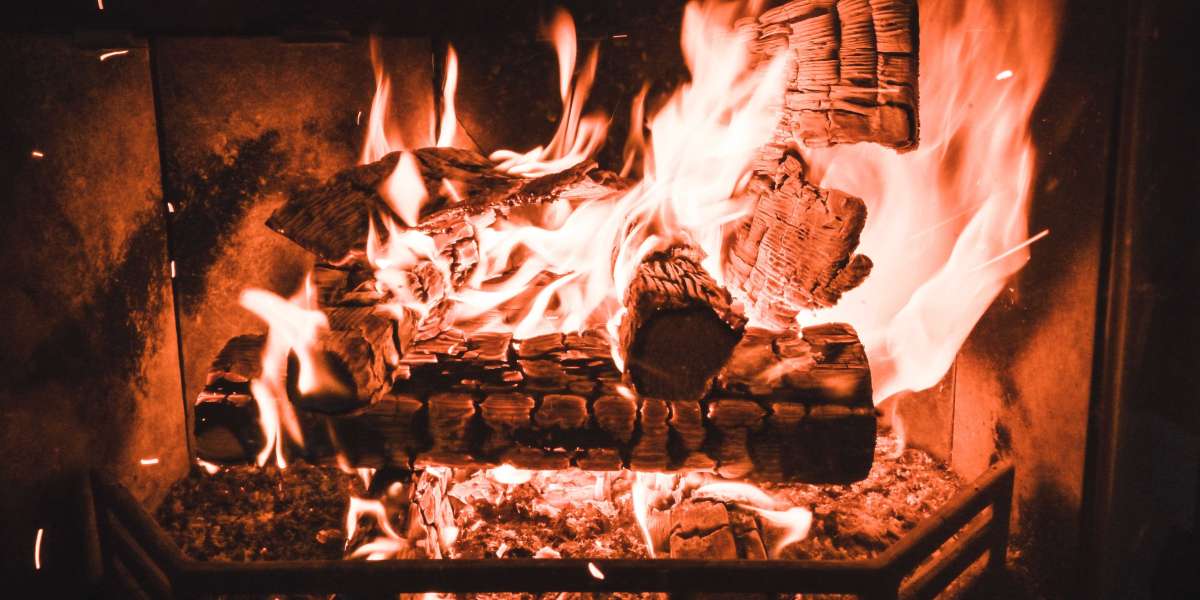 Wood stoves, in contrast to traditional open fireplaces, are engineered to burn wood. This enables them to comply with stricter emission standards.
Wood stoves, in contrast to traditional open fireplaces, are engineered to burn wood. This enables them to comply with stricter emission standards.Wood burning stoves provide dancing yellow flames, cosy crackling sounds and that primal sense of warmth. The smoke that is produced is contaminated by air pollutants such as formaldehyde, benzene, and polycyclic aromatic hydrocarbons.
Efficient
Fireplaces and stoves that burn wood offer a stunning and natural heat source to the home, and they are extremely efficient. A high-quality wood burner can have an Ecodesign rating of up to 77%. It is vital to get the most benefit of your wood burner, especially with increasing energy costs. The good thing is that it's easier than ever to do!
A key factor in how effective the wood-burning stove is is the moisture content of the firewood. This is the reason we suggest only using seasoned wood, which has been dried for at least one year, and often two years. The drier the wood, the more efficiently it burns which means less smoke and less harmful emissions.
Another benefit of a wood-burning stove is that it's an eco-friendly source of fuel, which is excellent for the environment. If you buy locally-sourced wood, you also help to support the active conservation and management of forests. This is beneficial for wildlife.
In terms of maintenance involved, the sole requirement for a wood burner is to regularly take out and dispose of the ash. It's somewhat of a hassle however it is worth it to get the most heat from every log. Furthermore that if you wait a couple of days until the ashes completely cool and then reuse them to make an eco-friendly and non-toxic ice melt. They can also be used to polish jewellery or absorb smells.
A fireplace that burns wood is a timeless classic. While they're not as popular than gas fireplaces, their appeal and ambiance of a roaring flame cannot be disregarded. They're great for snuggling up to on cold nights and are a perfect method of creating an inviting and warm space inside your home. Making the investment in a top-quality wood stove will pay off for many years. Our expert chimney sweeps are on hand to help you get the most from your stove - give us a call now to find out more.
Low Carbon
Wood burners that burn clean and efficiently are among the most efficient ways to save the cost of logs while keeping your home warm. Additionally, they also aid in the local woodland management. It's a excellent way to help the wildlife in your local area.
Wood-burning fireplaces and stoves create minimal pollution when they are properly maintained and operated with dry, seasoned firewood. However, if they are not maintained properly or are made of poor quality wood, the smoke produced by them contains fine particles (known as particulate pollution) that can cause irritation to the lung and other organs. Carbon monoxide, air pollutants that are toxic such as formaldehyde and benzene, and polycyclic aromatic hydrocarbons are also present. Inhaling this kind of air pollution could cause irritation to the lung as well as wheezing, coughing, and asthma attacks. It could even lead to serious health issues like cancer, heart disease, or premature death.
Some people are worried that wood-burning stoves will contribute to climate change however this isn't true. Wood burning produces energy that is carbon neutral. Throughout the lifetime of a tree, it absorbs carbon dioxide, and when it is burnt, the absorbed carbon is released back into the atmosphere.
The wood is produced locally, which reduces the amount pollution that is released during transportation. It is also essential to select high-quality woods that are seasoned and seasoned as they will have an extended and more consistent burn than softwoods.
Modern wood stoves, including those manufactured by Charlton Jenrick, emit much less pollution than older stoves. They have been tested and certified to meet the 2020 EPA standards which are considerably more strict than previous emissions limits.
All wood burning stoves should be fully vented to the outside of your home to ensure that they don't create a haze of exhaust inside your home. By keeping the flames in the vicinity of the logs, and ensuring you make use of dry, seasoned wood, all of our current clean burn and DEFRA exempt stoves produce very clear exhaust and have particulate levels 60 percent or less below the DEFRA limit.
A wood-burning stove that has an integrated unit or catalytic converter can provide the most efficient low carbon heating option. These units ignite gasses and particles released from the initial combustion in a subsequent phase by mixing them with superheated air. The remaining gases and particulates are then transferred to a catalytic unit for a final third combustion. This reduces emissions to levels far below the standards set by the government.
Clean Burn
Cleanburn wood stoves burn fuel with the highest possible efficiency. This results in the release of a small amount of particles into the air when burning wood. The air management system of the stove regulates the intake and exhaust of gases to ensure the combustion process takes place in a sealed and controlled environment. It also regulates the flame's height to maximize heat output and minimise emissions.
This means that your chimney and the surrounding area will be cleaner than older stoves. Particulate matter, also referred to as particle pollution, from wood that is not properly burned can cause respiratory issues, like wheezing and coughing, and contribute to heart disease, stroke, diabetes, and other serious conditions. The smoke caused by wood burning is an element that contributes to poor air quality in urban areas.
Smoke from poorly combusted wood is a source of fine particulate pollutants as well as hazardous air pollutant such as carbon monoxide, as well as other dangerous air pollutants like nitrogen oxides and volatile organic compounds (VOCs) as well as benzene and formaldehyde. These particles can penetrate deep into the lungs, as well as other organs causing discomfort, harm, and even death. Dust particles from the air can also cause a hazard to surfaces in your home, giving them a gritty feel.
It's important to use only top quality, seasoned, and dried firewood for your fireplace with a wood burner. Hardwoods such as oak beech, ash, and ash are the best for heating. Hardwoods are incredibly dense and have a higher BTU than softwoods. They also have more heat.
You should also determine if your local authority has rules regarding wood burning. These rules could include rules regarding odors and nuisances, as well as visible smoke emissions or smoke opacity limitations.
It is crucial to keep the glass of a wood stove that has an open front that is free of deposits and dirt. You can use a dry cloth or oven cleaner spray to accomplish this. You can also add bicarbonate soda and water to the glass.
Regular maintenance of your chimney and stove is also vital. Regular chimney cleanings are necessary to eliminate creosote, and to ensure that the flue works properly. It is also important to mark the dates of your periodic inspections on your calendar. This will help you avoid costly repairs and prolong your wood burner's life.
Low Maintenance
Wood burning fireplaces are very popular because they provide a natural warmth. However, this type of fire requires a bit of upkeep and maintenance. The chimney, flue, and stove are all possible sources of house fires if not cleaned and maintained regularly. Fireplaces can also be a great source of heat when the power goes out, especially during winter when snow storms can cause branches to fall from trees and knock down under-hanging power lines.
By using a wood stove to heat your home, you'll be able to reduce your carbon footprint compared to other fossil sources of fuel like gas. Modern wood stoves and inserts are designed to meet EPA (Environmental Protection Agency) standards, which means that they produce very low emissions. The more seasoned wood you use the more efficient your stove will be. You'll require less wood to achieve the same heat.
The fireplaces need some attention and maintenance. They must be kept clear of the combustible materials and have a screen in place. The flow of air will be improved by keeping the grate clean of ash and debris. This will help keep the fire burning longer and your home in good order. It is important to have your chimney and stove cleaned at least twice a year to avoid creosote accumulation, which can cause a fire hazard or clog and restrict ventilation.
A wood burning stove will need to be maintained on a regular basis and it may take time for a beginner homeowner to understand how to light, ignite and maintain a constant fire in the fireplace. But, once you've achieved the art of creating and maintaining the fire in your wood stove, it can be a source of lasting pleasure that will provide warmth and warmth to your home every year.
Wood burning fireplaces are around in some form or another for more than 500 years. They've gained popularity due to their energy efficiency, sustainability and the natural warmth of real wood. If you're considering a new heater, talk with your local certified Regency dealer to learn more about the advantages of an insert or stove made of wood for your home.








